May 2022.
I've always been fascinated by vultures. These majestic birds are often seen as symbols of death and decay, but I find them to be incredibly graceful and elegant. So when my friend and I decided to take a three-day trip to the French Baronnies to see the vultures at the Rocher du Caire near Remuzat, I was beyond excited. The Baronnies (between Valence and Avignon) is a mountainous region in southern France that is home to a large population of vultures. The Rocher du Caire is a clifftop lookout point that offers stunning views of the surrounding countryside and is a popular spot for vulture watching. We arrived at the Rocher du Caire early in the morning, hoping to catch a glimpse of the vultures as they took flight. We weren't disappointed. Within minutes, we saw dozens of vultures soaring overhead, their massive wingspans creating graceful arcs against the blue sky. Four different species of vultures are present in the region:
- Le Rocher du Caire between Saint May and Rémuzat is a famous nesting place for Griffon Vultures (Vautours Fauves) with a colony of around 290 couples. It was reintroduced in les Baronnies in 1996.
- The Black Vulture (Vautour Moine) was reintroduced in 2004, and the population in the Baronnies has increased since then to reach 14 couples as of 2022. While the Griffon Vultures nest on cliffs, the Black Vulture prefers to build its nest on top of high trees, if possible with an open view around.
- The Egyptian Vulture (Vautour Percnoptère) is also known to be reproducing in the region, with only one couple in 2021.
- The last of the 4 species present is the Bearded Vulture (Gypaète Barbu). It was reintroduced in 2016, but does not nest in the Baronnies, occasionally visiting the area to feed.
- The Black Vulture (Vautour Moine) was reintroduced in 2004, and the population in the Baronnies has increased since then to reach 14 couples as of 2022. While the Griffon Vultures nest on cliffs, the Black Vulture prefers to build its nest on top of high trees, if possible with an open view around.
- The Egyptian Vulture (Vautour Percnoptère) is also known to be reproducing in the region, with only one couple in 2021.
- The last of the 4 species present is the Bearded Vulture (Gypaète Barbu). It was reintroduced in 2016, but does not nest in the Baronnies, occasionally visiting the area to feed.
Le rocher du Caire
Vultures flying above a feeding cage
While preparing for the trip, we were not sure what to expect and how easily we could find the vultures. However, they proved to be so numerous in the surroundings of Rémuzat that we had no shortage of opportunities to observe them up close.
On the first day, as we were driving on a small mountain road climbing to the top of the Rocher du Caire, we spotted hundreds of them circling above one of the several feeding cages scattered within a radius of 20 kilometers around the colony. Feeding cages are small platforms where local farmers deposit their dead cattle, which has the advantage of providing food for the vultures and processing dead cattle carcasses in an ecologically friendly way.
In the animal world, vultures are an essential part of the food chain, eating dead animals and limiting the spread of diseases. Of the four French species, they each have distinct roles in cleaning carcasses.
The gregarious Griffon Vulture eats the muscles and viscera, the softer parts. Its long, plucked neck allows it to dig deep into the carcasses. A flock of a few dozen hungry individuals can transform an intact carcass into a pile of bones in less than 15 minutes. The Black Vulture specializes in ripping off tougher pieces like skin, tendons, and cartilage. The Egyptian Vulture is more opportunistic, eating smaller leftovers but also eggs, reptiles, and even feces. Finally, the Bearded Vulture is an outright bone breaker. While not disdaining smaller bones and tendons, it is mainly famous for taking away large bones from the feast and dropping them from the sky onto rocks to access the bone marrow, its favorite meal by far.
The gregarious Griffon Vulture eats the muscles and viscera, the softer parts. Its long, plucked neck allows it to dig deep into the carcasses. A flock of a few dozen hungry individuals can transform an intact carcass into a pile of bones in less than 15 minutes. The Black Vulture specializes in ripping off tougher pieces like skin, tendons, and cartilage. The Egyptian Vulture is more opportunistic, eating smaller leftovers but also eggs, reptiles, and even feces. Finally, the Bearded Vulture is an outright bone breaker. While not disdaining smaller bones and tendons, it is mainly famous for taking away large bones from the feast and dropping them from the sky onto rocks to access the bone marrow, its favorite meal by far.
Griffon Vulture - taken from the rocher du Caire
The second day came with a surprise! While taking videos from the top of the Rocher du Caire, we were lucky enough to spot a couple of Egyptian Vultures crossing the valley, unfortunately a bit too far away to get decent photos or movies. It was my first time seeing this bird in the wild. The male and female were flying together along the edge of the mountain facing us, their yellow masks making a small, colored spot on their white and elegant silhouettes. They are present in the Baronnies, but there are only a few individuals.
We concluded our stay with a nice hike from le Mas de Léoux to Saint May, the path leading a few dozen meters to a feeding cage. Halfway through the hike, I found myself facing a lonely Black Vulture, standing on the top of a pine tree, about 20 meters from the hiking trail. He had the kindness to wait a few seconds, staring at me, before flying away, which gave me time to get a nice shot. It was a surprising encounter, as it was the only Black Vulture we saw during our trip.
In no more than three days, we saw hundreds of Griffon Vultures and had the opportunity to spot the rare Egyptian and Black Vultures. We will have to go back for the Bearded Vulture.
Where to shoot:
As the griffon vultures are nesting on the cliffs above the village of Rémuzat, driving up to Saint May is a good option to shoot the birds flying at eye height. Some of the griffon vultures can come as far as only a few meters away, allowing to hear distinctly the sound of the wind sliding on their giant wings; it is quite an impressive experience. I would recommend coming in early to avoid the crowd and the heat, especially in summer.
There are also nice hikes around the rocher du Caire starting in Rémuzat. I recommend asking the office de tourisme or the NGO Maison des Vautours for advice.
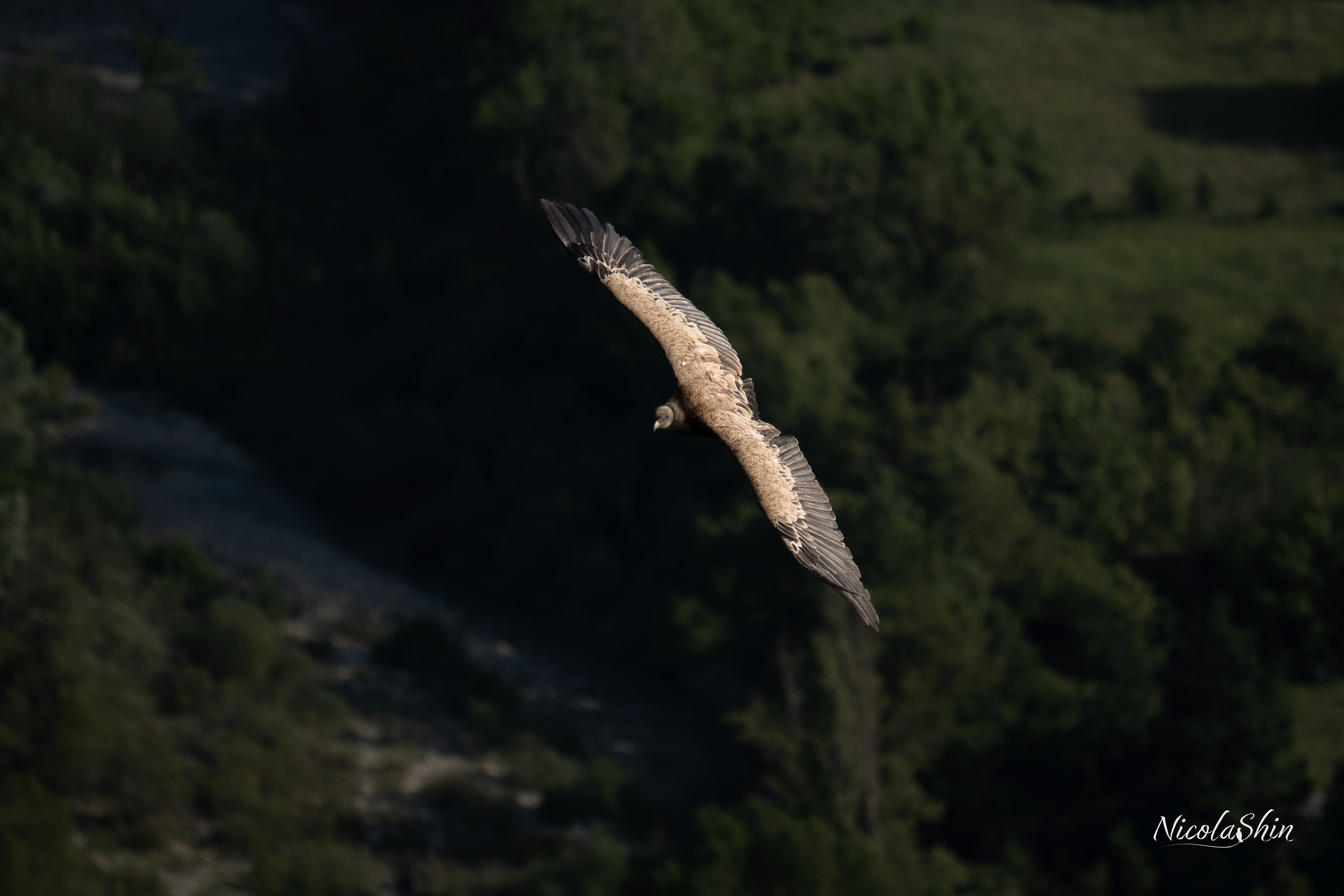
Griffon Vulture
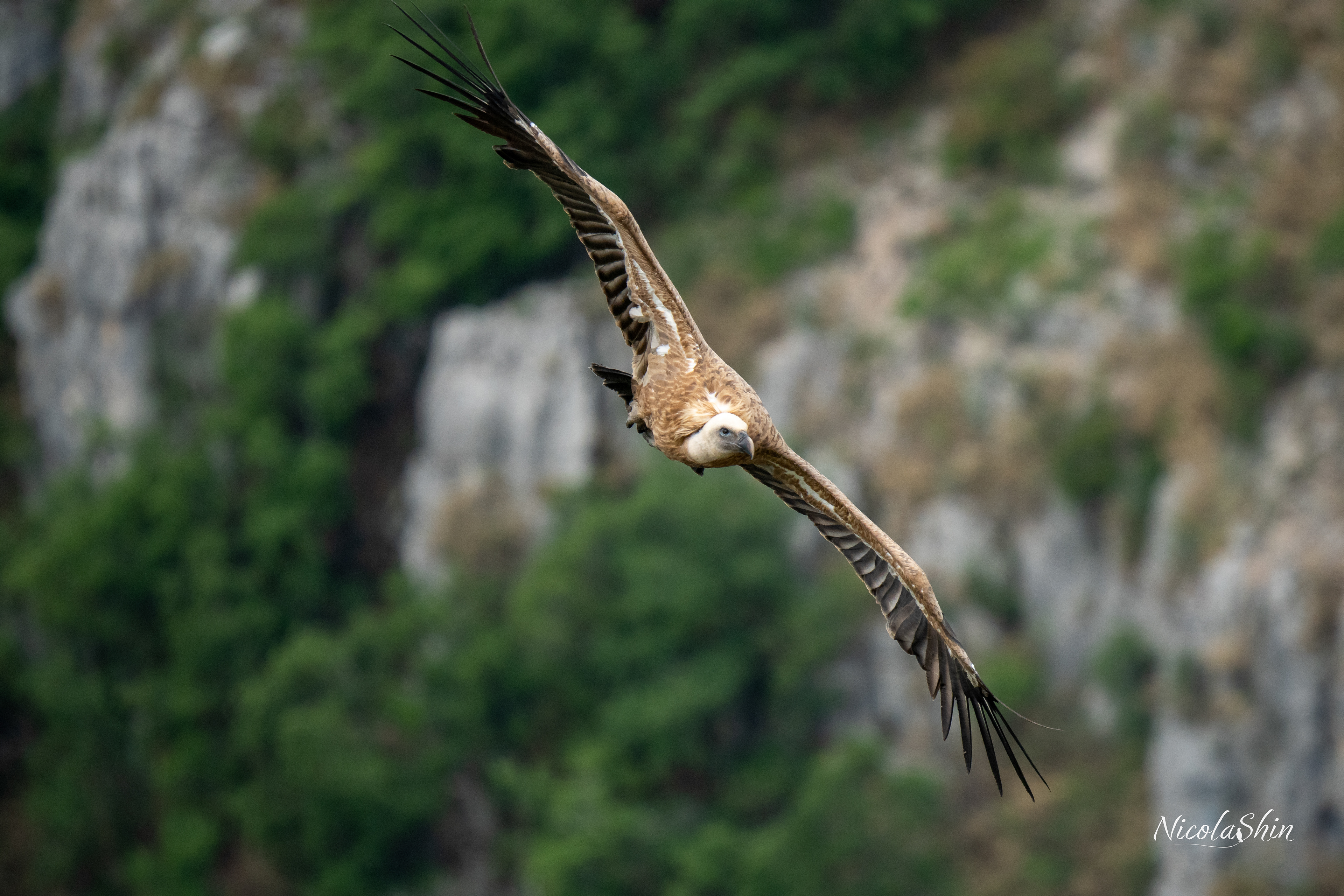
Griffon Vulture
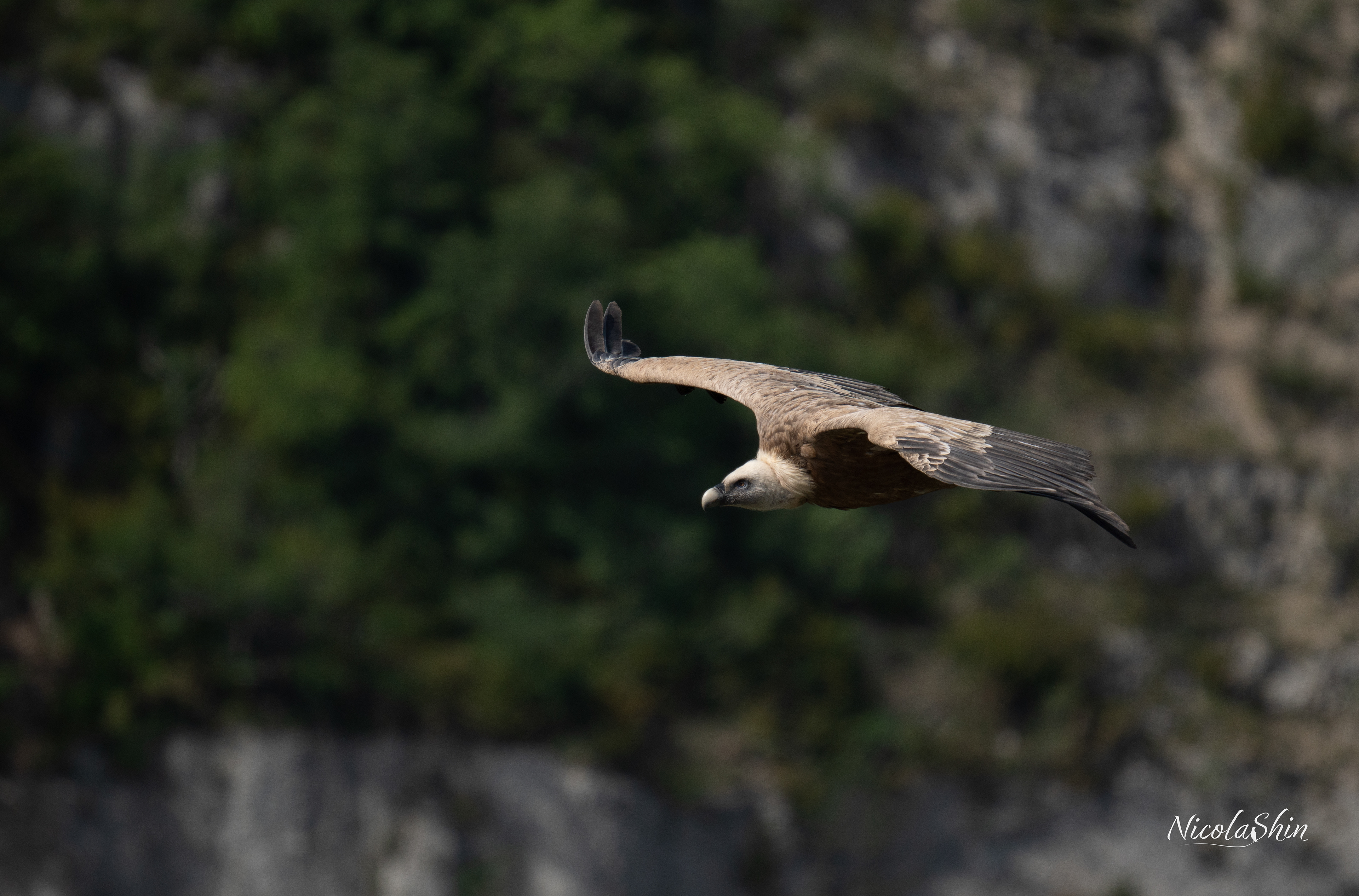
Griffon Vulture

Griffon Vulture
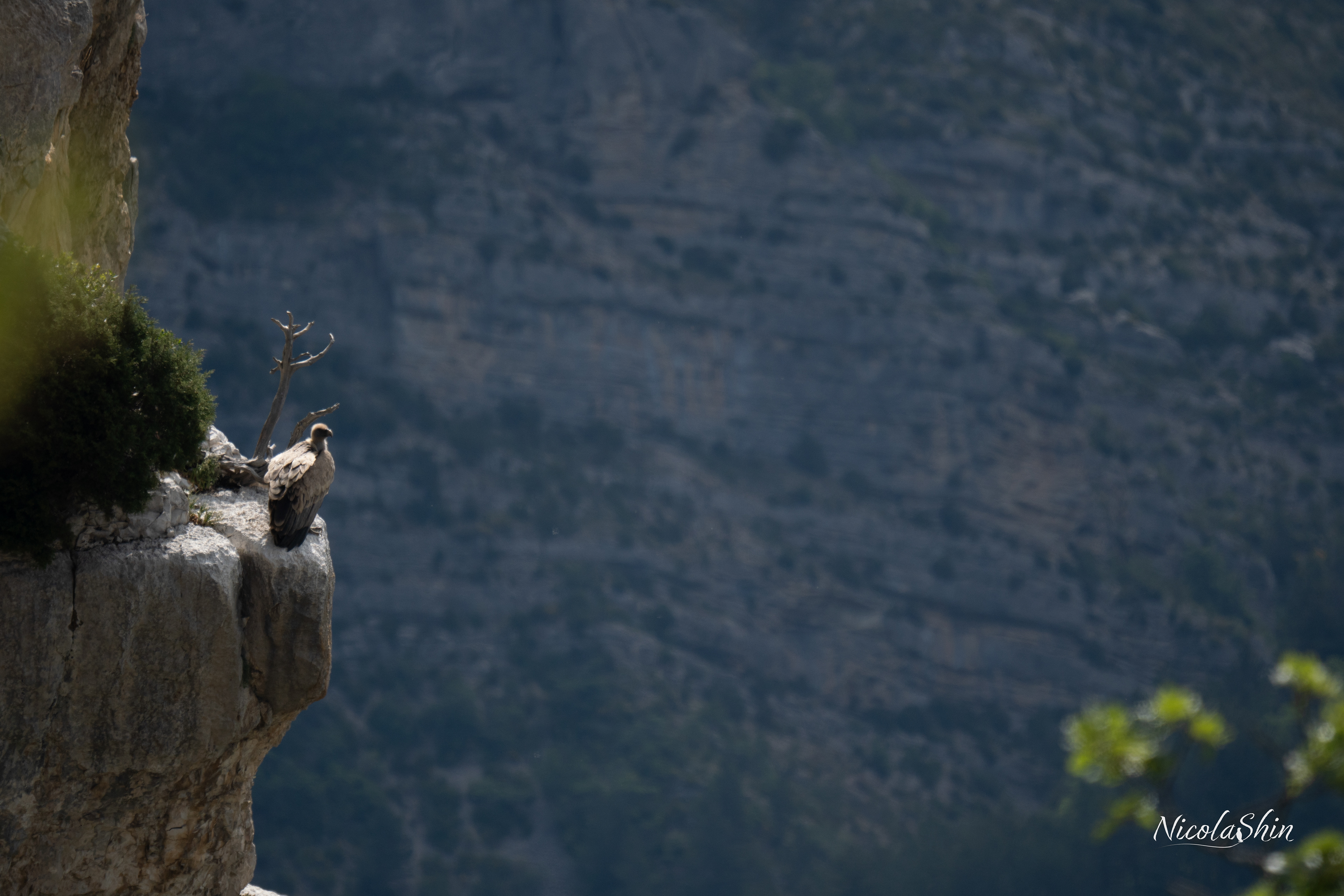
Griffon Vulture on the cliff
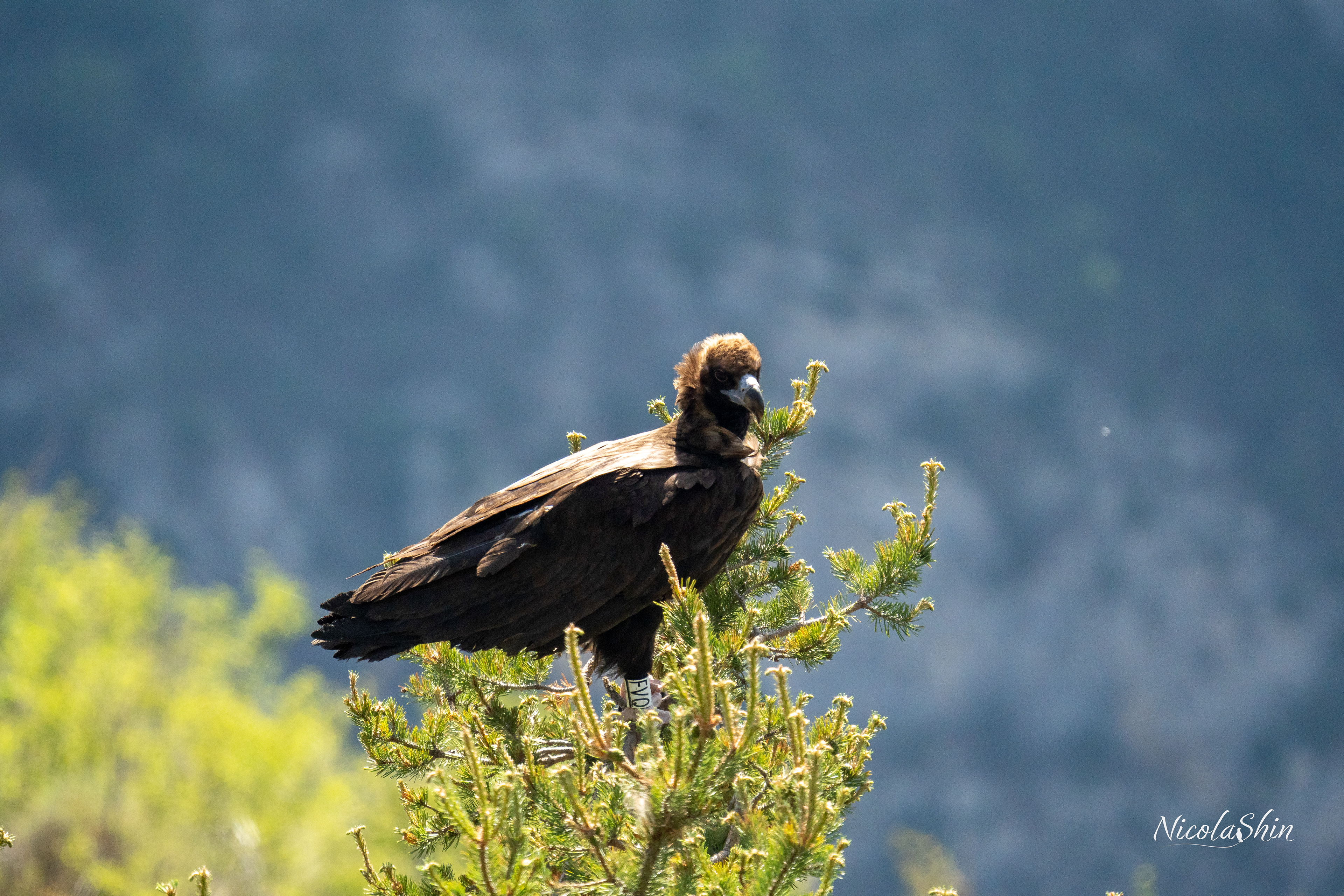
Black vulture (Vautour Moine)

